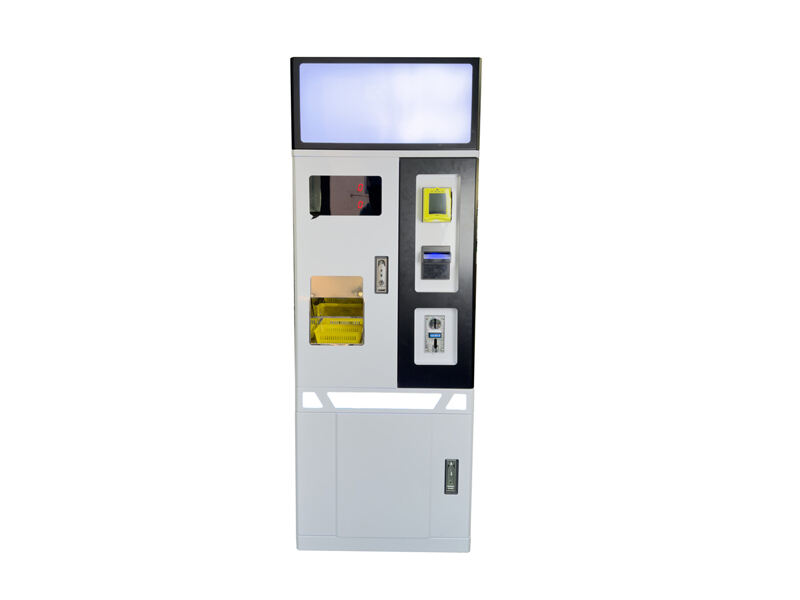Understanding Gacha Machine Mechanics and Their Impact on Efficiency
The mechanical design of gacha machines directly influences their reliability, maintenance needs, and transaction efficiency. Optimized coin pathways and strategic component placement reduce friction, improve sorting accuracy, and extend service life—key factors in maintaining consistent performance across high-usage environments.
How Gacha Machine Design Influences Coin Handling and Transaction Speed
Studies from the vending industry show that curved coin channels featuring rounded edges cut down on jams by around 18 to 22 percent when compared to those sharp angled designs. The smoother path does mean coins take just a bit longer to drop through since gravity works differently on them, but manufacturers have come up with high torque motors that speed things along again. There's a catch though these powerful motors actually produce about 40 percent more heat than regular ones do. That extra warmth needs managing somehow so companies install special cooling systems right next to other parts to stop them from getting too hot and possibly failing.
Key Wear Points in Dispensing Mechanisms and Coin Sorters
Three components are responsible for 73% of mechanical failures identified in automated audits:
- Pivot joints in dispensing arms, which suffer metal fatigue after 12,000–15,000 cycles
- Stainless steel sorting blades, experiencing 0.02mm material loss per 1,000 coins processed
- Polymer feed rollers, which develop performance-limiting grooves within 6–8 months under average use
Proactively replacing these parts before reaching critical wear thresholds reduces unplanned downtime by 31% compared to reactive repair strategies.
Implementing a Proactive Maintenance Routine
A structured maintenance program prevents 87% of gacha machine failures related to mechanical wear or debris buildup. Regular upkeep minimizes transaction errors, extends equipment lifespan, and lowers repair costs by addressing minor issues before they escalate.
Step-by-Step Guide to Cleaning Coin Pathways and Critical Components
- Power down the machine and remove remaining coins via the service hatch
- Dislodge debris in sorting channels using compressed air (50 PSI) to avoid damaging sensors
- Wipe sensors and counting mechanisms with 70% isopropyl alcohol wipes to remove grime and residue
- Lubricate moving parts in the hopper assembly using silicone-based grease to ensure smooth operation without attracting dust
- Test run the machine with 25–50 coins to confirm proper function post-cleaning
Best Practices for Inspecting Physical Damage and Component Wear
- Conduct weekly visual checks for bent ejector pins or warped coin rails
- Perform monthly measurements of sorting wheel tolerances, ensuring deviations stay within ±0.2mm
- Schedule quarterly replacement of high-wear components:
• Nylon guide bushings
• Spring-loaded retention arms
• Optical sensor lenses
Creating an Effective Daily, Weekly, and Monthly Maintenance Checklist
| Frequency | Key Tasks | Success Metric |
|---|---|---|
| Daily | Empty coin bins, verify display messages | 0 residual coins, no error codes |
| Weekly | Inspect belt tension, test emergency stop | 3–5mm belt play, instant shutdown |
| Monthly | Calibrate weight sensors, update firmware | ±0.05g accuracy, latest OS version |
This tiered maintenance model supports reliable operation across diverse usage patterns—from high-volume arcades to seasonal venues—by aligning service intervals with actual wear and operational demands.
Leveraging Predictive Maintenance and Real-Time Monitoring
Using sensors and automated diagnostics to detect issues early
Today's gacha machines come equipped with all sorts of monitoring tech including vibration sensors, infrared thermal cameras, and those fancy optical scanners that keep an eye on important parts like coin sorters and the hopper mechanism. The system actually spots problems before they get bad, catching things like when coins start getting off track by about 0.3mm or when motors show signs of trouble with around 15% higher resistance than normal. By looking at what's happening right now compared to how things should be running, these diagnostic systems can forecast when parts might fail. They've been collecting data for between 12 to 18 months straight, which helps them predict failures with pretty good accuracy around 89% of the time. This means technicians can swap out worn components during regular maintenance periods instead of having unexpected breakdowns when business is busiest.
Case Study: Reducing service calls by 40% with real-time monitoring
One regional arcade operator installed wireless IoT sensors on all their 112 gacha machines to keep track of how much force the dispensing arms were applying and how evenly coins were distributed in the collection baskets. The system would send warnings when it detected something was off compared to what the manufacturers said should happen normally. About two thirds of problems got caught before peak times when customers were around. As a result, each machine spent roughly 3 hours less per month sitting idle for repairs, and the parts that sort out coins lasted almost a third longer than before. Looking at similar cases across the industry, arcades with these smart sensors need technicians to come in about 40% less often according to Plant Engineering magazine from last year.
Troubleshooting Common Coin Exchange Machine Failures
Resolving jammed coin pathways: Quick diagnostic and repair steps
First thing's first, turn off the machine completely before doing anything else. Open up that front panel so we can take a good look at how the coin transport system looks inside. For those stubborn coins that won't budge, give them a blast of compressed air around 80 to 100 PSI works best while turning the gears by hand to help dislodge anything stuck. When checking if the rollers are properly aligned, grab a 0.5mm feeler gauge for measurement purposes. If there's more than 1.2mm gap between components, that's usually what causes those frustrating misfeed problems later on. Don't forget to put fresh NSF H1-grade lubricant on all those pivot points roughly every 150 hours of operation. Keeping these parts well lubricated makes sure everything moves smoothly when customers are actually using the machine.
Identifying root causes of counter errors: Misfeeds, sensor failures, and debris
Infrared sensors should be calibrated quarterly to maintain ±0.1mm detection precision. When error codes like "E24" or "E31" appear, test photointerrupters using a multimeter in DC voltage mode. Debris accumulation beneath weighing plates accounts for 58% of calibration drift, as detected by automated diagnostics.
Data insight: 68% of malfunctions linked to debris accumulation (Journal of Vending Technology, 2022)
A six-month field study of 412 machines published in the Journal of Vending Technology (2022) found biweekly vacuum cleaning of sorting trays reduced coin jams by 73%. Combining this with monthly UV-C light treatments helps inhibit microbial growth, which can accelerate corrosion in metal components and degrade polymer parts over time.
FAQ
What are the causes of mechanical failures in gacha machines?
The main causes of mechanical failures in gacha machines include metal fatigue in pivot joints, material loss in stainless steel sorting blades, and groove development in polymer feed rollers.
How important is regular maintenance for gacha machines?
Regular maintenance is crucial as it minimizes transaction errors, extends equipment lifespan, and reduces repair costs by addressing issues before they escalate.
How do sensors assist in gacha machine maintenance?
Sensors monitor the machines by detecting early signs of mechanical issues, allowing technicians to address problems before they lead to failures, thus reducing unexpected breakdowns.
What are best practices for cleaning and maintaining gacha machines?
Best practices include power down before cleaning, use of compressed air for debris removal, wiping sensors with alcohol wipes, lubricating moving parts, and conducting test runs post-cleaning.

 EN
EN
 AR
AR DA
DA NL
NL FI
FI FR
FR DE
DE EL
EL HI
HI IT
IT JA
JA KO
KO NO
NO PL
PL PT
PT RU
RU ES
ES SV
SV TL
TL IW
IW ID
ID VI
VI HU
HU TH
TH TR
TR MS
MS GA
GA LO
LO MY
MY